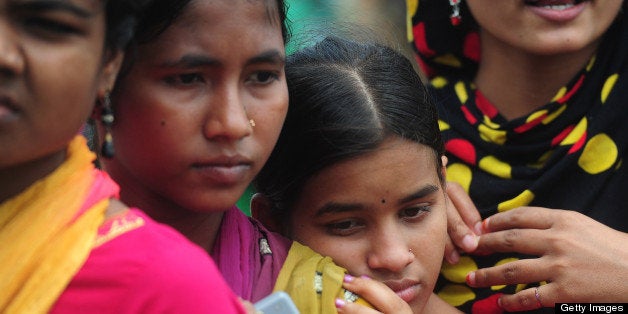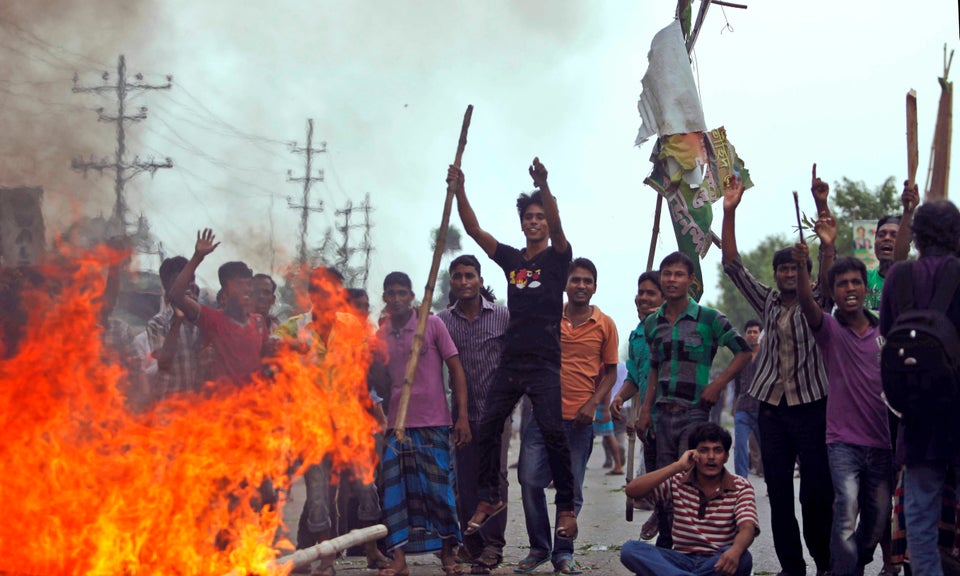
Following worker protests and a decision by the Bangladeshi government to reevaluate the minimum wage, the lone national association of garment manufacturers on Monday shut down all factories in Ashulia, one of the country's major garment industry hubs.
Leaders of the Bangladesh Garment Manufacturers and Exporters Association (BGMEA) announced the decision at a press conference Monday afternoon, just as the rescue operation at Rana Plaza came to a close in the adjacent area of Savar, the industrial suburb of the city of Dhaka. Responders have pulled at least 1,127 dead bodies from the debris since the eight-story garment factory collapsed three weeks ago.
Although the organization had originally said all factories in Ashulia would be shut down indefinitely, leaders later said the closure applied only to factories where there was worker unrest.
The announcement of the mass factory shutdown came the same day as the cabinet changed labor law to allow workers to unionize without their employer reviewing a list of union supporters, a common barrier to labor organizing in the country. The shutdown also followed a day after the government tasked a committee with reevaluating the minimum wage in Bangladesh. Reports in Bangladeshi media suggested that industry leaders weren't happy with the government's decision, which will mandate a new wage starting in May.
In explaining its decision to shut down the factories and lock out workers, BGMEA cited the two-week-long worker discontent in nearby Ashulia.
"For at least the last 14 days, workers have turned up only to give their attendance and not work," BGMEA vice president Mohammad Shahidullah Azim told HuffPost.
"No work, no pay," Azim said.
According to Azim, Ashulia is home to about 200 garment factories that employ roughly 400,000 workers, and it's become a tinderbox for protests incited by what he called "international forces and NGOs." BGMEA records, however, say there are 320 enlisted garment factories in Ashulia, producing 20 percent of the total garment exports from the country.
The BGMEA decision followed reports of an hour-long blockade of a highway in Ashulia by workers. Reports said that police fought back attacks on the factories, with workers hurling stones at windows.
Labor leader Nazma Akter said she believes the unrest is the result of the Savar garment factory collapse that left workers frightened about their safety.
"They are afraid of unsafe workplaces," said Akter, president of Sammilito Garment Shramik Federation. "The protests were to demand safety at workplaces in the aftermath of a deadly collapse."
Even though authorities became aware of serious cracks in Rana Plaza the day before it crumbled on April 24, workers who died in the collapse had been forced to clock in under the threat of seeing their pay docked. The disaster has led to widespread protests at garment facilities throughout the country.
As for the Ashulia factory closure, it probably has a "connection" to the government's wage evaluation, Akter maintained.
"Businessmen were unhappy with the decision," she said. "Maybe they're making some noise to force the government to change the decision."
Asked if the closure would only worsen the discontent, BGMEA vice president Azim blamed the government for the deteriorating situation.
"It is the duty of the government to look after workers if they're enraged," Azim said. "We are not running the administration. The government has failed to ensure security for the owners. The government has failed to control the situation."
